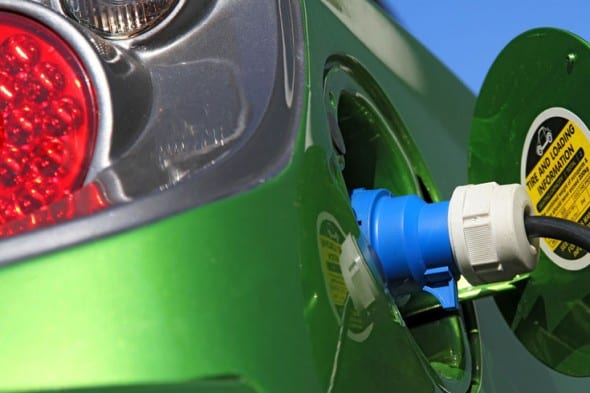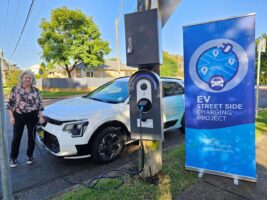The electric mobility sector was buzzing with activity last week, the last of the third quarter, with Tesla Motors announcing better-than-expected sales numbers for the period and rival suppliers showing off new models.
About 24,500 vehicles were shipped during the quarter by Tesla: 15,800 Model S Sedans and 8,700 Model X sport-utility vehicles. The company produced 25,185 vehicles, 37% more than in the second quarter. It is increasing production at its Fremont, California, factory with an eye toward making 500,000 cars a year by 2018, a goal that also depends on the company’s battery factory in Nevada coming online. Both efforts will require more funding in the fourth quarter, chief executive officer Elon Musk said.
Automakers from General Motors’ Opel to Renault are trumpeting their latest electric-car offerings at the ongoing Paris Motor Show. Volkswagen unveiled the ID concept vehicle, which is set to hit the market by 2020 and can drive almost twice as far as Tesla’s upcoming Model 3 sedan on a charge. While only a prototype, the VW hatchback will kick off the rollout of 30 battery-powered cars in the coming years, as the German manufacturer seeks to recast an image tarnished by the emissions-cheating scandal.
Mercedes is being similarly aggressive. After previously relying on converting existing models to electric, the Daimler unit now plans to introduce at least 10 new battery-powered vehicles. The cars and related technology such as charging boxes and energy storage will be marketed under the EQ nameplate, giving the effort more visibility. “We’re now flipping the switch,” Daimler chief executive officer Dieter Zetsche said in Paris. “We’re ready for the launch of an electric product offensive that will cover all vehicle segments, from the compact to the luxury class.”
Policy is meanwhile evolving to support increasing usage of electric vehicles. California – the biggest auto market among US states – may focus on building more electric-vehicle charging stations and encouraging battery-powered, self-driving cars to reach its mandate for zero-emission autos. “Probably the next wave of activity has to be on the charging side and maybe other kinds of incentives for automated cars,’’ Mary Nichols, chairman of the state’s powerful Air Resources Board, said in an interview.
On the corporate news side, NuTonomy, a self-driving car start-up backed by Ford Motor chairman Bill Ford and Singapore’s government, is in discussions with potential investors for a new round of funding as it works toward a full commercial launch in 2018. Expected to close in the first half of 2017, the amount will be in “multiples” of the $16m raised in May, the company’s chief executive officer, Karl Iagnemma, said in an interview.
The week’s headline for renewables came from China, where the National Development and Reform Committee and the National Energy Administration unveiled a proposal to cut feed-in tariffs for solar and wind, to help reduce the subsidy deficit.
The FiT reduction ranges from 24% to 31% for utility solar projects and is 29-52% for behind-the-meter projects. For offshore wind projects, the incentive tariffs proposed are about 6% lower for near-shore projects and 7% less for inter-tidal projects, or projects where the foundations of the wind turbines are only fully submerged during high tide. Bloomberg New Energy Finance analysts expect these proposals to be toned down somewhat before implementation in 2017. The analysis of the proposed solar FiT cut can be read here, and the impact of the offshore wind proposals can be seen here.
Egypt announced new feed-in tariff rates last week, ranging from four to eight US cents per kWhn for wind, while solar power rates will range from 7.88 to 8.40 cents per kWh. Taiwan also announced its intention to offer FiTs to promote renewable energy.
In financing, RWE’s green energy business Innogy has seen demand for all the shares for sale in its initial public offering, including the over-allotment option, according to an update on the deal from sale advisers on Monday. The company could be valued at as much as EUR 20bn ($22.5bn) and may raise as much as EUR 5bn from a sale of new shares and exiting stock by its parent.
Tianjin Lishen Battery is considering a listing in Shanghai or Shenzhen to expand its annual capacity by 2020 to 20GWh, about 18% more than the estimated total battery consumption last year in China, according to president Qin Xingcai. The company estimates revenue will increase 55% to CNY 6.5bn ($974m) this year.
Ireland’s Mainstream Renewable Power said it would team up with General Electric to build $1.5bn of new wind power in Vietnam.
Zambia and Zimbabwe have appointed the African Development bank as lead financial advisor for the construction of the 2.4GW Batoka Gorge hydro-power project, expected to cost $4bn, an official said.
This week will see the Luxembourg Stock Exchange introduce the world’s first exchange to trade nothing but green securities. The Luxembourg Green Exchange, also known as LGX, intends to act as a gatekeeper for green bonds and other environmentally-focused financial instruments to help reduce ambiguity in the market.
Source: BNEF. Reproduced with permission.











